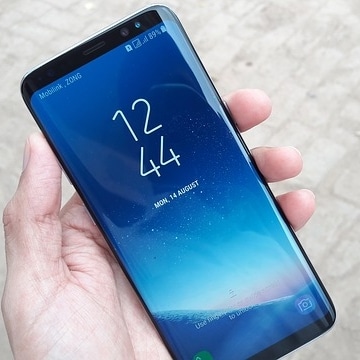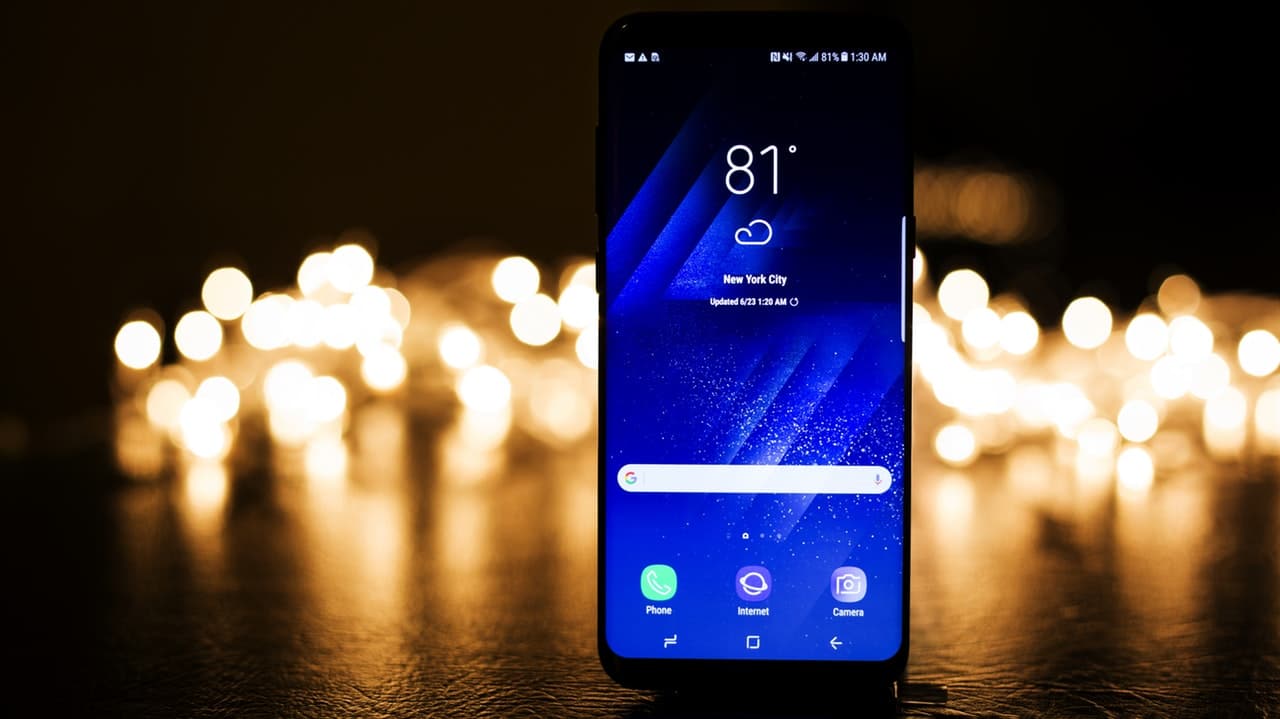
Galaxy S9: The top notch(less) phone
Photo courtesy of Pexels. Note: this is the S8, although there is little difference in the S9’s front.
Yet another Mobile World Congress has passed that Samsung’s Galaxy series launch outshone nearly every other innovation released in late-February. Following the extremely successful year of the S8 and S8 plus, Samsung had an immense amount of buzz and excitement surrounding its newest device, housing all the latest technology and specs—all at a price that causes many to go starry-eyed. So is it worth your money, and how does it size up to the phone-lords of 2017?
First off, if you bought an S8 last year, opening up your new S9 may induce a severe sense of deja vu. Other than the relocated fingerprint sensor (thankfully moved to below the camera instead of awkwardly to the side), and slightly slimmer top and bottom bezels, the chassis of the device is the same as the 2017 model.
On the outside, expandable storage, USB-C port and the headphone jack are located in the same place as last year. So if you are upgrading from the S8, be sure to grab the right device when you head out of your home…
Samsung already makes a high quality smartphone display, called Infiniti Display, which has curved edges on the side to make the display look as if it were cascading off the near bezel-less (almost 90 percent screen-to-body ratio) sides of the phone. Just like the S8; the S9 has an 18.5-to-9 ratio. This is a super AMOLED screen aspect ratio.
And the screen is huge. It flaunts 5.8 inches with the S9 and 6.2 inches with the S9 plus. And the screen does not have a notch.
Under the hood, the Galaxy sports all of the latest hardware. If you are in the United States or China, your phone will come equipped with the latest and fastest processing chip. Additionally, it ships with the latest version of Android, Oreo. The S9 is the fastest Android today according to tests, although it does not beat the iPhone X in benchmark tests.
But you could say that it is the fastest notch-less phone.
New from the S8 is stereo speakers, giving you surround sound to watch movies, play action games or listen to music. Also new is ARemoji, an Animoji-inspired method to turn yourself into emojis.
But Samsung is most excited about being the first to “reimagine” the smartphone camera. “It changes like your eyes,” declares the Galaxy’s homepage. What’s the big deal?
Most smartphone cameras come with a fixed aperture lense, meaning that when you buy a Google Pixel 2 which has f1.8, that is all you are going to get. This seems to suit the vast majority of people. However, Samsung has added an dual aperture lense, “that adapts like the human eye.” This gives the user a plethora of scenarios in which the phone can take exceptional photos.
So now the million dollar question: Should you buy it?
NGU student Adam Kelly, a Samsung owner himself, shared his thoughts concerning the new Galaxy S9.
“I am not enticed by what is offered,” the digital media student stated. “But it will be interesting to see how the camera performs long-term. And the fingerprint sensor placement is much better than before, but they should move it to the front.”
Then, with a twinge of sarcasm, “They need to get rid of Bixby.”
Bixby, Samsung’s virtual assistant attempt to keep up with the Google Assistant and Apple’s Siri, was introduced in last year’s flagship. Many users have risen in outrage concerning a dedicated Bixby button, but rumor has it that the virtual assistant will receive a massive 2.0 upgrade in this fall’s Note 9 launch.
“Samsung needs to focus on making great phones,” Kelly said, “rather than compete with Apple. When they do that, then they can really compete [on a new level].”
A benefit to buying Samsung is its top-tier trade-up program: you can trade in your old iPhone, Samsung, or other phone for up to $300 in credit towards your new S9 (taking the price down from $719.99 to as low as $419.99). Even better, if you are a student, you could save up to an additional 20%.
…or you could get these discounts applied to a new, price-dropped S8 if reading about the S9 doesn’t excite you.

